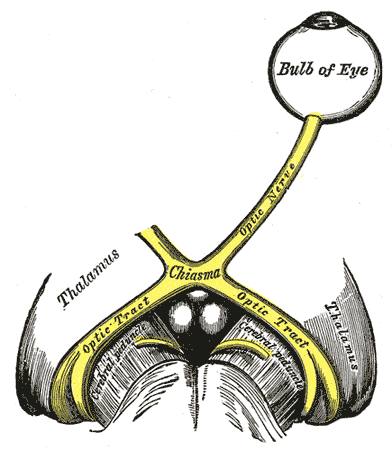[1]
Pratt SG, Beyer CK, Johnson CC. The Marcus Gunn phenomenon. A review of 71 cases. Ophthalmology. 1984 Jan:91(1):27-30
[PubMed PMID: 6709318]
Level 3 (low-level) evidence
[2]
Traboulsi EI. Congenital cranial dysinnervation disorders and more. Journal of AAPOS : the official publication of the American Association for Pediatric Ophthalmology and Strabismus. 2007 Jun:11(3):215-7
[PubMed PMID: 17572338]
[3]
Shah AD, Kumar AB, Kothari K. Bilateral Marcus Gunn jaw winking synkinesis with monocular elevation deficiency: a case report and literature review. International ophthalmology. 2012 Apr:32(2):199-201. doi: 10.1007/s10792-012-9538-0. Epub 2012 Feb 19
[PubMed PMID: 22350119]
Level 3 (low-level) evidence
[4]
Weaver RG Jr, Seaton AD, Jewett T. Bilateral Marcus Gunn (jaw-winking) phenomenon occurring with CHARGE association. Journal of pediatric ophthalmology and strabismus. 1997 Sep-Oct:34(5):308-9
[PubMed PMID: 9310920]
[5]
Demirci H, Frueh BR, Nelson CC. Marcus Gunn jaw-winking synkinesis: clinical features and management. Ophthalmology. 2010 Jul:117(7):1447-52. doi: 10.1016/j.ophtha.2009.11.014. Epub 2010 Feb 25
[PubMed PMID: 20188419]
[6]
Kannaditharayil D, Geyer H, Hasson H, Herskovitz S. Bilateral Marcus Gunn jaw-winking syndrome. Neurology. 2015 Mar 10:84(10):1061. doi: 10.1212/WNL.0000000000001338. Epub
[PubMed PMID: 25754805]
[7]
Ziga N, Biscevic A, Pjano MA, Pidro A. Marcus Gunn Jaw-Winking Syndrome: a Case Report. Medical archives (Sarajevo, Bosnia and Herzegovina). 2019 Aug:73(4):282-284. doi: 10.5455/medarh.2019.73.282-284. Epub
[PubMed PMID: 31762566]
Level 3 (low-level) evidence
[8]
Khwarg SI, Tarbet KJ, Dortzbach RK, Lucarelli MJ. Management of moderate-to-severe Marcus-Gunn jaw-winking ptosis. Ophthalmology. 1999 Jun:106(6):1191-6
[PubMed PMID: 10366092]
[9]
Lehman AM, Dong CC, Harries AM, Patel A, Honey CR, Patel MS. Evidence of ancillary trigeminal innervation of levator palpebrae in the general population. Journal of clinical neuroscience : official journal of the Neurosurgical Society of Australasia. 2014 Feb:21(2):301-4. doi: 10.1016/j.jocn.2013.03.029. Epub 2013 Oct 10
[PubMed PMID: 24120706]
[11]
Freedman HL, Kushner BJ. Congenital ocular aberrant innervation--new concepts. Journal of pediatric ophthalmology and strabismus. 1997 Jan-Feb:34(1):10-6
[PubMed PMID: 9027674]
[12]
D'Esposito M, Sanna G, Turra MV, CCaccia-Perugini G. [Electromyographic study of the Marcus Gunn phenomenon]. Bulletins et memoires de la Societe francaise d'ophtalmologie. 1970:83():177-87
[PubMed PMID: 5512168]
[13]
Rao MV, Syeda A. Jaw-winking movement (Marcus-Gunn phenomenon). Indian journal of medical sciences. 1973 Dec:27(12):925-7
[PubMed PMID: 4790418]
[14]
Alshamrani AA, Alghulaydhawi FA, Al Shamrani M. Marcus Gunn Jaw-Winking Syndrome Associated with Morning Glory Disc Anomaly. Middle East African journal of ophthalmology. 2019 Jan-Mar:26(1):37-39. doi: 10.4103/meajo.MEAJO_279_18. Epub
[PubMed PMID: 31114123]
[15]
Dżaman K, Zborowska-Piskadło K, Pietniczka-Załęska M, Kantor I. Marcus Gunn (jaw-winking) phenomenon in pediatric otorhinolaryngology practice. International journal of pediatric otorhinolaryngology. 2019 Feb:117():153-156. doi: 10.1016/j.ijporl.2018.11.035. Epub 2018 Nov 30
[PubMed PMID: 30579071]
[16]
Awan KJ. Marcus gunn (jaw-winking) syndrome. American journal of ophthalmology. 1976 Sep:82(3):503-4
[PubMed PMID: 961806]
[17]
Park DH, Choi WS, Yoon SH. Treatment of the jaw-winking syndrome. Annals of plastic surgery. 2008 Apr:60(4):404-9. doi: 10.1097/SAP.0b013e31812f7dc2. Epub
[PubMed PMID: 18362569]
[18]
Wong JF, Thériault JF, Bouzouaya C, Codère F. Marcus Gunn jaw-winking phenomenon: a new supplemental test in the preoperative evaluation. Ophthalmic plastic and reconstructive surgery. 2001 Nov:17(6):412-8
[PubMed PMID: 11766020]
[19]
Pandey M, Baduni N, Jain A, Sanwal MK, Vajifdar H. Abnormal oculocardiac reflex in two patients with Marcus Gunn syndrome. Journal of anaesthesiology, clinical pharmacology. 2011 Jul:27(3):398-9. doi: 10.4103/0970-9185.83693. Epub
[PubMed PMID: 21897519]
[20]
Tian N, Zheng YX, Zhou SY, Liu JL, Huang DP, Zhao HY. [Clinical characteristics of moderate and severe Marcus-Gunn jaw-winking synkinesis and its surgical treatment]. [Zhonghua yan ke za zhi] Chinese journal of ophthalmology. 2007 Dec:43(12):1069-72
[PubMed PMID: 18331673]
[21]
Morax S, Mimoun G. [Surgical treatment of the Marcus-Gunn syndrome. Indications and results. Apropos of 15 cases]. Ophtalmologie : organe de la Societe francaise d'ophtalmologie. 1989 Apr-May:3(2):160-3
[PubMed PMID: 2641099]
Level 3 (low-level) evidence
[22]
Putterman AM. Jaw-winking blepharoptosis treated by the Fasanella-Servat procedure. American journal of ophthalmology. 1973 Jun:75(6):1016-22
[PubMed PMID: 4708631]
[23]
Ning Q, Cao J, Xie J, Gao Q, Wang C, Ye J. Unilateral Levator Aponeurosis Excision for Marcus Gunn Syndrome and Risk Factors of Residual Jaw Winking. Journal of ophthalmology. 2019:2019():2058047. doi: 10.1155/2019/2058047. Epub 2019 Nov 4
[PubMed PMID: 31781375]
[24]
Betharia SM, Kumar S. Levator sling for Marcus Gunn ptosis. The British journal of ophthalmology. 1987 Sep:71(9):685-9
[PubMed PMID: 3663562]
[25]
Sthapit PR, Saiju R. Surgical Outcomes in Cases of Marcus-Gunn Jaw-Winking Phenomenon. Kathmandu University medical journal (KUMJ). 2015 Jan-Mar:13(49):34-7
[PubMed PMID: 26620746]
Level 3 (low-level) evidence
[26]
Kumar V, Goel N, Raina UK, Ghosh B. "See-saw" Marcus Gunn syndrome. Ophthalmic plastic and reconstructive surgery. 2011 Nov-Dec:27(6):e144-5. doi: 10.1097/IOP.0b013e3182078e15. Epub
[PubMed PMID: 21346672]
[27]
García Ron A, Jensen J, Garriga Braun C, Gómez E, Sierra J. [Marin-Amat and inverted Marcus-Gunn syndrome. Two case reports]. Anales de pediatria (Barcelona, Spain : 2003). 2011 May:74(5):324-6. doi: 10.1016/j.anpedi.2011.01.017. Epub 2011 Mar 4
[PubMed PMID: 21377433]
Level 3 (low-level) evidence
[28]
Jethani J. Marin-Amat syndrome: a rare facial synkinesis. Indian journal of ophthalmology. 2007 Sep-Oct:55(5):402-3
[PubMed PMID: 17699965]
[29]
Doucet TW, Crawford JS. The quantification, natural course, and surgical results in 57 eyes with Marcus Gunn (jaw-winking) syndrome. American journal of ophthalmology. 1981 Nov:92(5):702-7
[PubMed PMID: 7304698]
[30]
Kwik RS. Marcus Gunn Syndrome associated with an unusual oculo-cardiac reflex. Anaesthesia. 1980 Jan:35(1):46-9
[PubMed PMID: 7396112]

